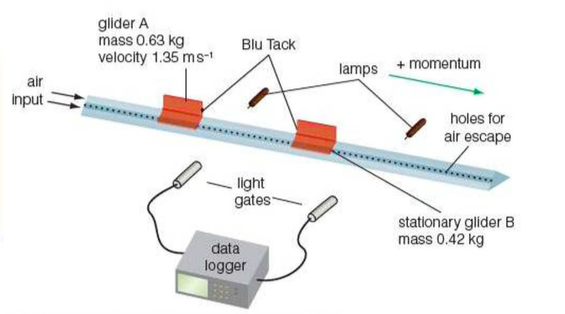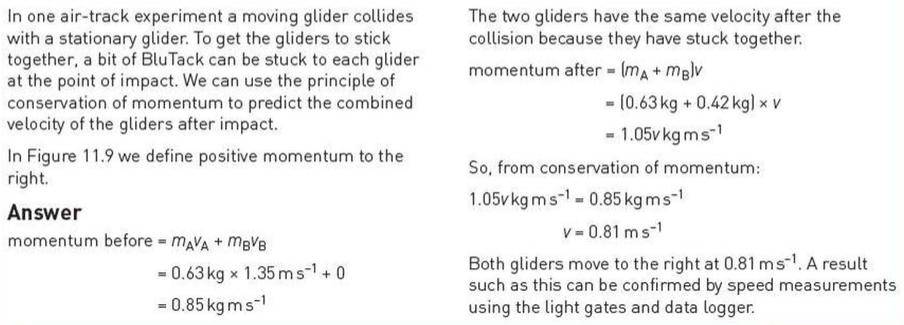Conservation of Linear Momentum
Summary
⇒ We use the term linear momentum when we refer to collisions (or explosions) that take place in one dimension i.e. along a straight line

⇒ This shows a demonstration of a small one-dimensional explosion
- The head of a match has been wrapped tightly in aluminium foil
- A second match is used to heat the foil and the head of the first match, which ignites and explodes inside the foil
- The gasses produced cause the foil to fly rapidly and the matchstick to fly in the opposite direction
⇒ In all collisions and explosions, both total energy and momentum are conserved, but kinetic energy is not always conserved
⇒ In this case, the chemical potential energy in the match head is transferred to the kinetic energy of the foil and matchstick, and also into thermal, light and sound energy
⇒ As the match head explodes, Newton's third law of motion tells us that both the matchstick and foil experience equal and opposite forces
- Since the forces act for the same time interval, both the matchstick and foil experience equal and opposite impulses, F▵t
⇒ Since F▵t = ▵(mv), it follws that the foil exactly the same positive momentum as the matchstick gains negative momentum
⇒ We can now do a vector sum to find the total momentum after the explosion:

⇒ So there is conservation of momentum: tht total momentum of the foil and matchstick was zero before the explosion, and the combined momentum of the foil and matchstick is zero after the explosion
Collision on an air track
⇒ Collision experiments can be carried out using gliderson linear air tracks
⇒ These can demonstrate the conservation of linear momentum
⇒ The air blowing out of small holes in the track lifts the gliders so that frictionoal forces are very small


Extra
⇒ Also see our notes on: